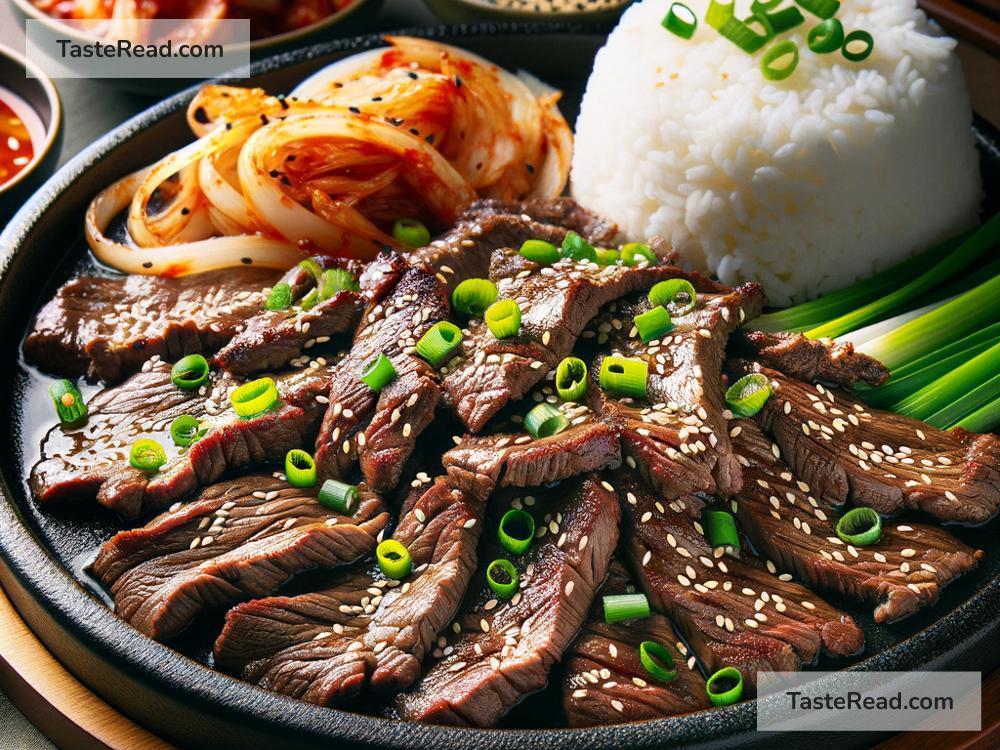Unveiling the History of Korean Bulgogi
Have you ever tasted a dish so mouthwatering that it transports you to a different place? Well, if you’re yet to experience this sensation, let me introduce you to the succulent world of Korean Bulgogi. This traditional Korean dish, known for its tender, marinated and grilled beef, is not just a meal; it’s a journey through the rich tapestry of Korean history and culture.
The Origins
The story of Bulgogi starts centuries ago, tracing back to the Goguryeo era, one of Korea’s Three Kingdoms, around 37 BC to 668 AD. Initially called “maekjeok,” the dish involved skewering and grilling beef. It wasn’t until the Joseon Dynasty, around the 12th century, that the version of Bulgogi closer to what we know today began to take shape. This period introduced the marinating process, transforming the dish by enhancing the meat’s flavor and tenderness. The term “bulgogi” itself, combining the Korean words for “fire” (bul) and “meat” (gogi), perfectly encapsulates the essence of this dish – fire meat.
The Evolution
Over the centuries, Bulgogi continued to evolve, reflecting the changing lifestyle and preferences of the Korean people. During the Joseon Dynasty, Bulgogi was a dish reserved for the royal and noble classes. It was a symbol of status and privilege. However, as Korea went through numerous changes, including occupation, wars, and modernization, Bulgogi began to spread among the common folk, becoming a staple at Korean tables regardless of social status.
The 20th century, particularly after the Korean War, marked a significant turning point for Bulgogi. Korea’s rapid development and globalization brought this once-exclusive dish to the international stage. Korean immigrants introduced Bulgogi to their new communities, opening restaurants and sharing their culture. Nowadays, Bulgogi is celebrated worldwide, found not only in specialized Korean restaurants but also in fusion dishes, showcasing its versatility and universal appeal.
The Recipe
The heart of Bulgogi lies in its preparation. The dish traditionally uses thinly sliced beef, marinated in a mixture that typically includes soy sauce, sugar, sesame oil, garlic, and pepper. This marination process, crucial for achieving the distinctive sweet and savory flavor profile, tenderizes the beef and infuses it with deeply aromatic notes. While beef is the most common choice, variations using chicken, pork, and even seafood illustrate the adaptability of this culinary masterpiece.
Cooking Bulgogi involves grilling the marinated meat, usually on a barbecue or stove-top grill pan. The high heat sears the meat quickly, locking in the flavors while ensuring a tender, juicy bite that melts in your mouth. Served with a side of steamed rice and assorted Korean side dishes, known as “banchan,” Bulgogi provides a well-rounded meal, bursting with flavors and textures.
The Cultural Significance
More than just a dish, Bulgogi is a reflection of Korean culture and hospitality. It’s commonly prepared on special occasions and holidays, symbolizing the gathering of family and friends and the sharing of joy and warmth. The communal aspect of cooking and eating Bulgogi, often right at the table over a shared grill, exemplifies the Korean value of togetherness and communal harmony.
Furthermore, Bulgogi’s international popularity serves as a bridge between cultures, inviting people worldwide to experience and appreciate Korean cuisine and, by extension, Korean history and traditions. It’s a testament to the universal language of food and its power to connect and unify us across borders.
In Conclusion
From its royal beginnings to its status as a beloved global cuisine, the history of Korean Bulgogi is a fascinating journey through time. It’s a dish that has adapted and evolved, yet remained true to its roots, symbolizing the resilience and vibrancy of Korean culture. Whether you’re a seasoned foodie or new to Korean cuisine, Bulgogi offers a taste experience that’s rich in flavor and history. So, the next time you savor a bite of this delicious dish, remember you’re not just enjoying a meal; you’re partaking in a tradition that has transcended centuries, bringing people together one delicious bite at a time.


